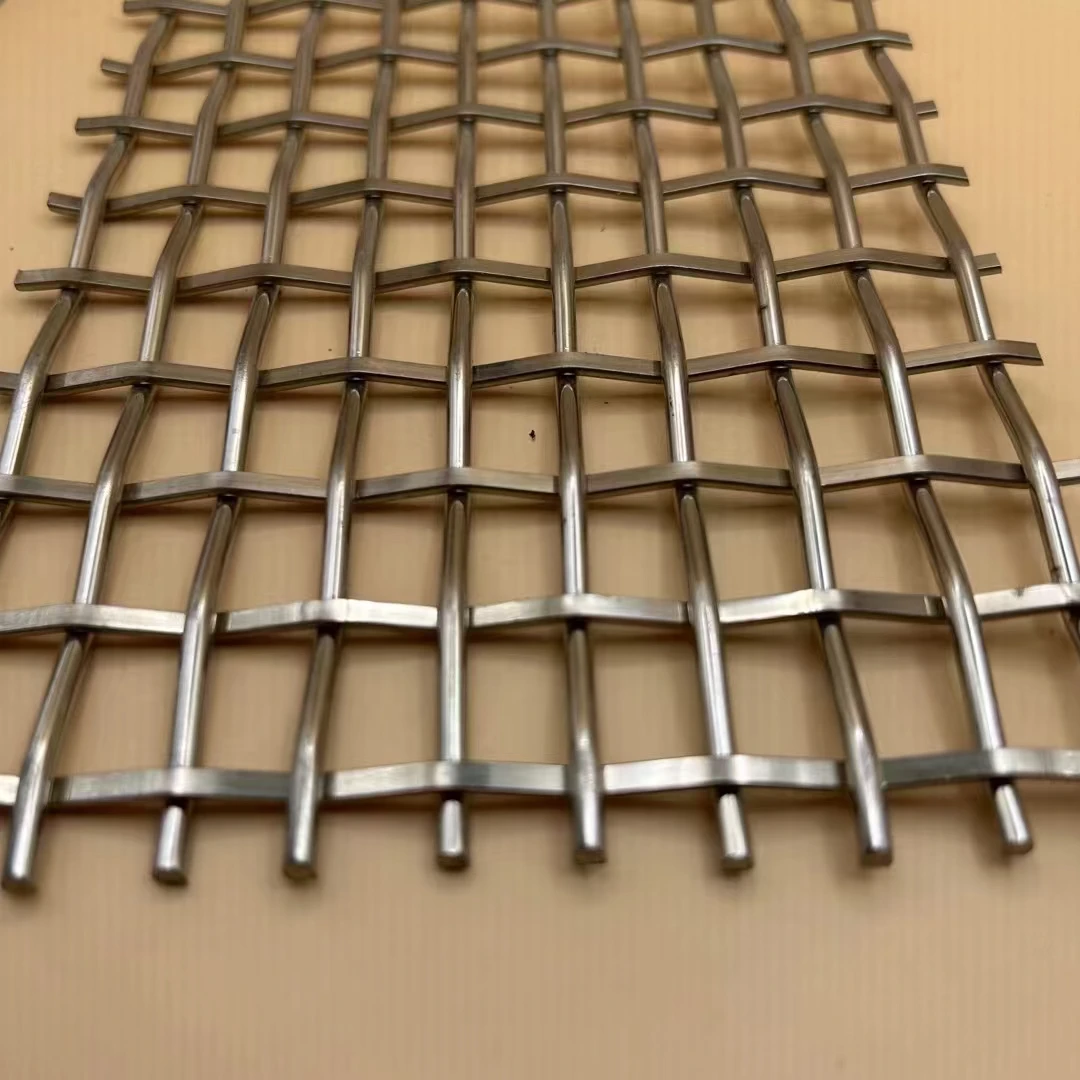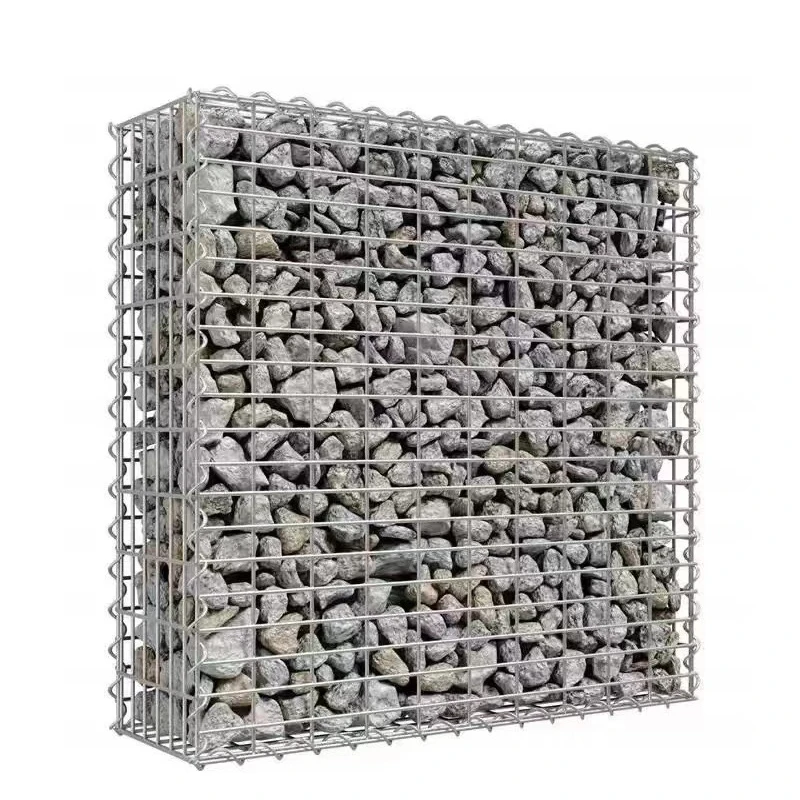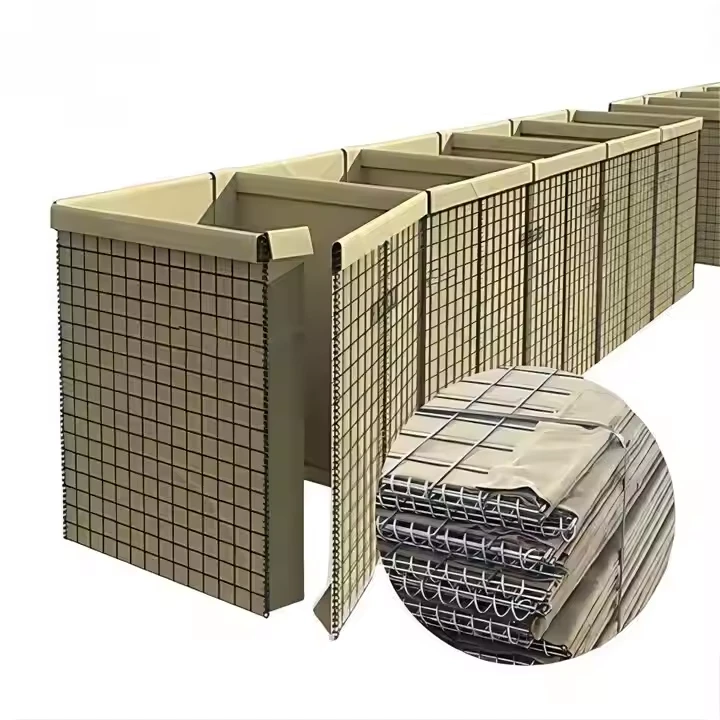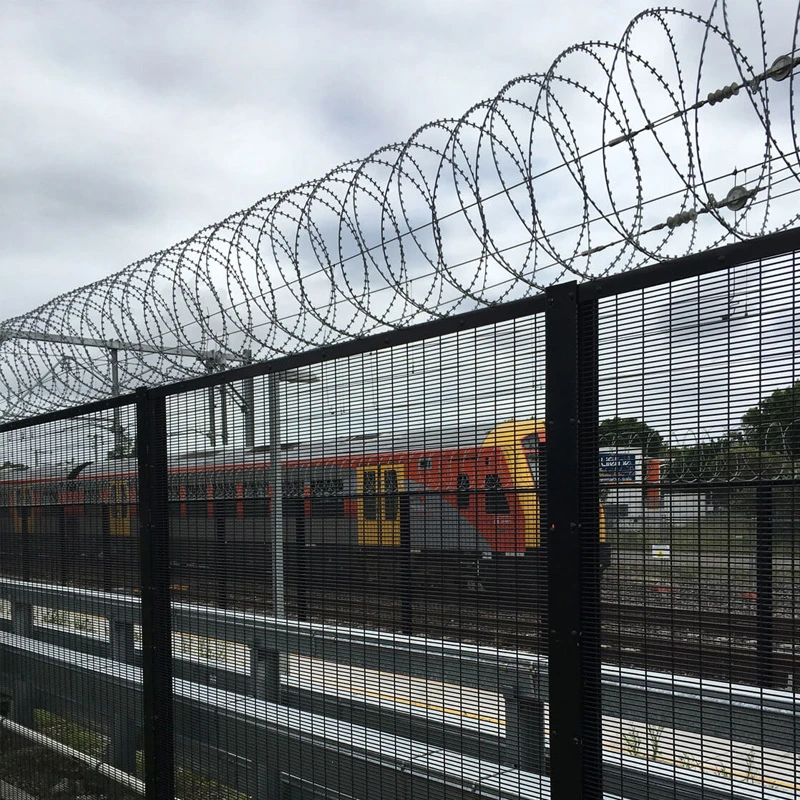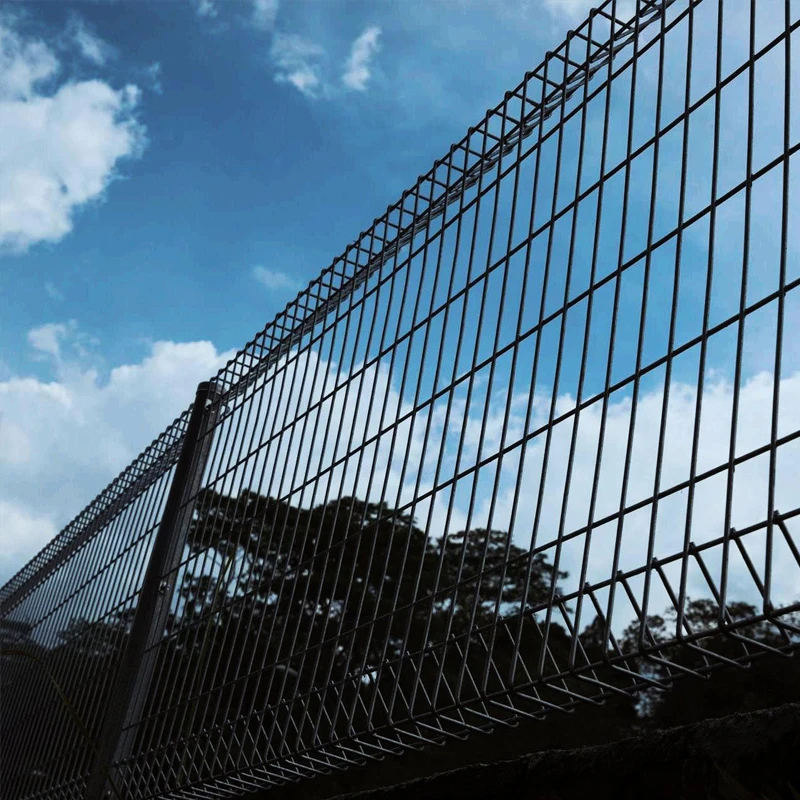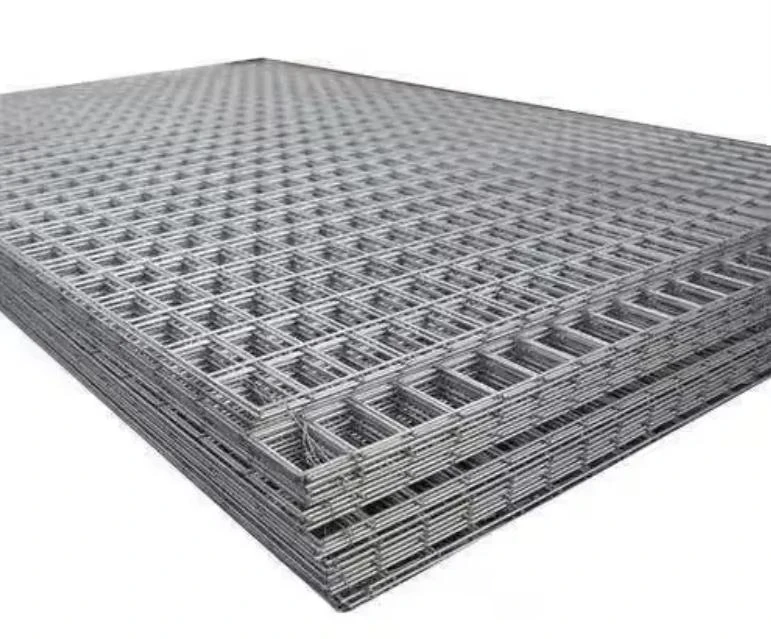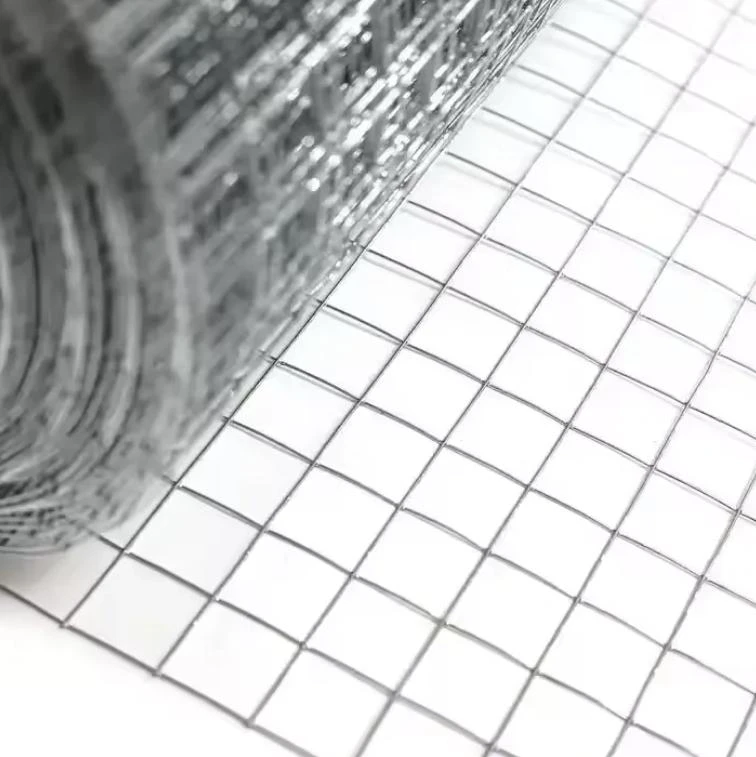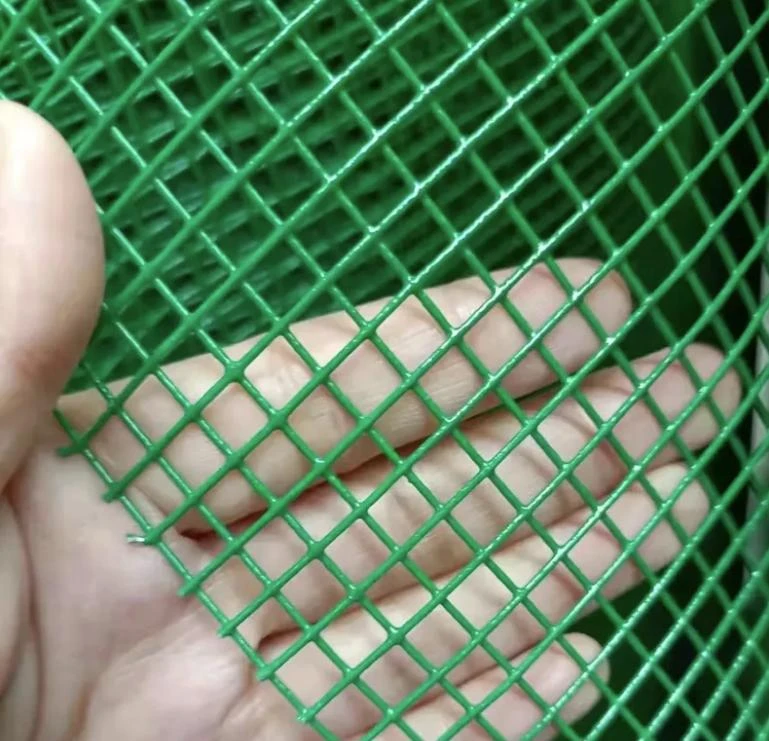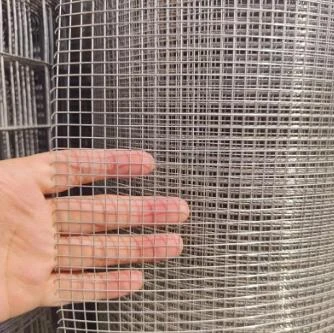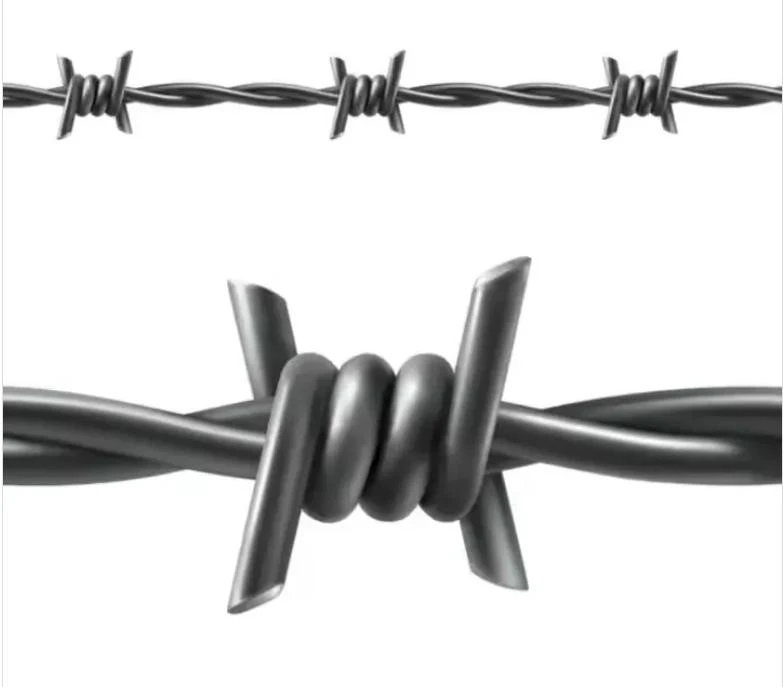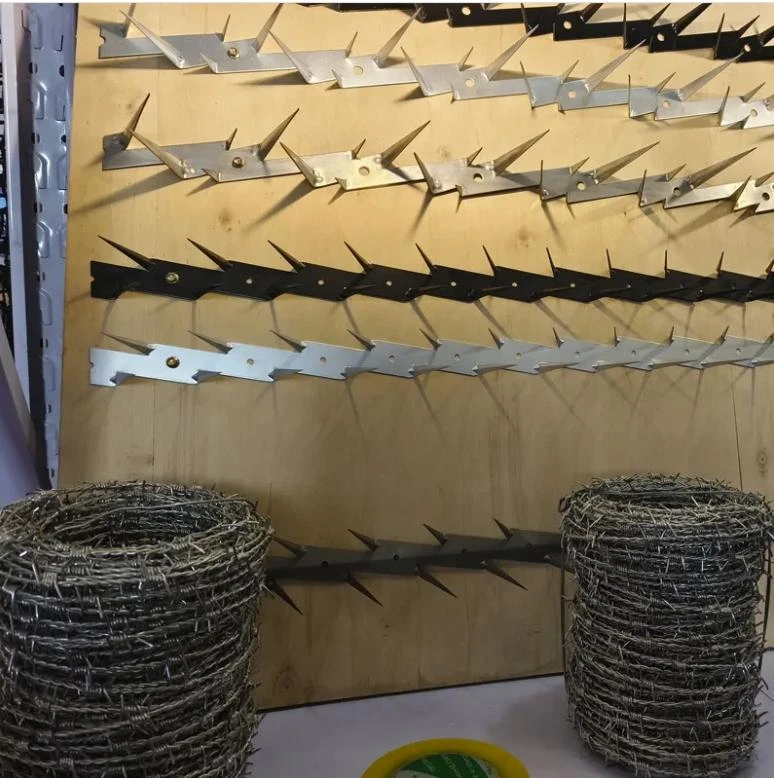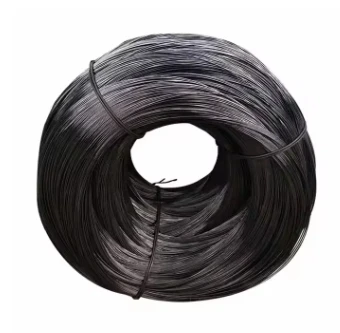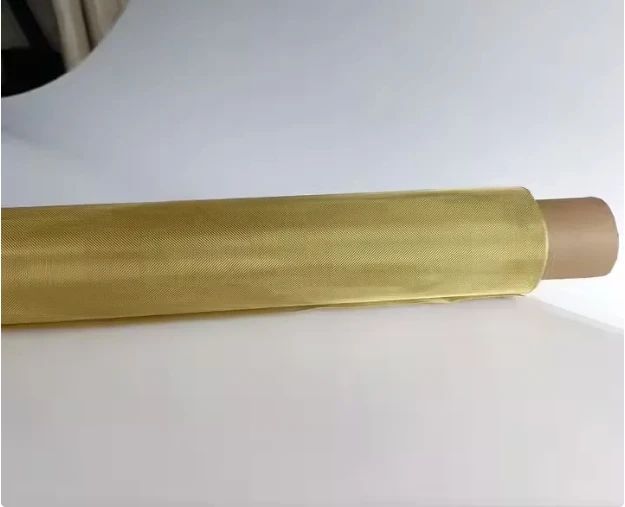Stacheldraht besteht aus korrosionsbeständigen, verzinkten Stahlschneidstreifen, die um einen Kern aus verzinktem Federstahldraht gewickelt sind. Er kann nicht ohne hochspezialisierte Werkzeuge durchgeschnitten werden, und selbst dann ist es eine langsame und gefährliche Arbeit. Stacheldraht aus Ziehharmonika-Stahl ist eine langlebige und sehr effektive Barriere, die von Sicherheitsexperten anerkannt und geschätzt wird.
Rasierklingen-Stile
Die Klingenstile werden hauptsächlich in zwei Serien unterteilt:
BTO (Stachelbandhindernis) und CBT (Konzertina-Stachelband).
Darunter gibt es fünf am häufigsten verwendete Stile, darunter BTO-10 (kurze Klinge), BTO-22 (mittlere Klinge), BTO-30 (Reißklinge), CBT-60 (Angelhakenklinge) und CBT-65 (lange Klinge).
Why Galvanized Razor Wire Stands Up to Corrosion & Wear
In harsh environments—coastal salt spray, industrial chemicals, or relentless rain—ordinary fencing succumbs to rust and decay. But a razor wire fence with galvanized coating defies these forces, making it a staple for long-term security. JINJIU’s galvanized razor fence designs leverage advanced metallurgy to outlast corrosion and wear, ensuring lasting protection where other barriers fail.
At the core of this resilience is the hot-dip galvanizing process. Each strand of the razor wire fence is submerged in molten zinc (450°C), forming a metallurgical bond between zinc and steel. This creates a uniform coating—typically 80-120g/m² thick—that acts as a sacrificial barrier: zinc corrodes first, preserving the underlying steel. Unlike paint or plastic coatings that chip or peel, this zinc layer self-heals minor scratches, preventing rust from taking hold even when the surface is nicked.
Corrosion resistance shines in extreme conditions. In coastal areas, salt-laden air attacks unprotected metal, but galvanized razor fence forms a dense zinc oxide layer that blocks moisture and ions from reaching the steel core. Similarly, in industrial zones with chemical runoff or high humidity, the zinc coating neutralizes corrosive agents, maintaining structural integrity for 15+ years—far longer than uncoated alternatives, which degrade in 3-5 years.
Wear resistance adds another layer of durability. The razor wire fence’s high-tensile steel core, paired with the galvanized coating, withstands physical stress: repeated contact with wildlife, wind-driven debris, or accidental impacts. The sharp blades retain their edge longer, as zinc’s hardness (2.5 on the Mohs scale) resists dulling from friction or weathering. This means less frequent replacement, reducing long-term costs for facilities relying on a razor fence for perimeter security.
JINJIU’s commitment to quality ensures each galvanized razor wire fence meets strict standards, with coating thickness tested via ultrasonic measurement to guarantee consistency. Whether securing ports, prisons, or agricultural land, the result is a barrier that thrives in the toughest conditions—proof that galvanization isn’t just a treatment, but a promise of enduring performance.
From Prisons to Factories: Key Applications for Single Razor Wire
Single razor wire is a versatile security solution, and JINJIU’s razor wire fence designs excel across high-stakes environments, from maximum-security facilities to industrial sites. Its unique blend of deterrence and durability makes it indispensable where unauthorized access risks safety, assets, or operations.
Prisons and correctional facilities rely on a razor fence for perimeter control. The sharp, interlocking blades create an impassable barrier, discouraging escape attempts or external breaches. JINJIU’s single razor wire—mounted atop walls or along fences—features high-tensile steel cores and galvanized coatings, withstanding tampering and harsh weather. Its compact design fits within tight security perimeters, ensuring minimal space usage while maximizing protection, a critical factor in confined prison layouts.
Industrial factories and manufacturing plants turn to razor wire fences to safeguard equipment, inventory, and sensitive machinery. Warehouses storing high-value goods (electronics, pharmaceuticals) benefit from its visible deterrence, reducing theft risks. The wire’s resistance to cutting tools and corrosion (via hot-dip galvanization) makes it ideal for outdoor storage yards or facilities near chemical exposure, where durability directly impacts long-term security costs.
Border checkpoints and customs zones use a razor fence to manage controlled access. Its ability to span large distances—with rolls up to 50m—simplifies installation along vast perimeters. The sharp blades deter illegal crossings without impeding official vehicle or pedestrian flow, balancing security with operational efficiency. For remote border regions, JINJIU’s UV-resistant razor wire fence withstands extreme temperatures and wildlife interference, ensuring consistent performance in unmonitored areas.
Agricultural and energy sites also leverage single razor wire. Farms protecting livestock from predators or crops from theft use it to reinforce existing fences, while solar farms and wind installations secure equipment against vandalism. The wire’s lightweight design eases installation across uneven terrain, making it suitable for rural landscapes where heavy barriers are impractical.
In every application, JINJIU’s razor fence combines functionality with adaptability: customizable blade density (10-16 blades/m) for varying threat levels, and material options (galvanized steel or stainless steel) for climate resilience. It’s not just a barrier—it’s a tailored security partner, proving that a single razor wire’s value spans far beyond its sharp edges.
BTO-10 (kurze Klinge)
Der BTO-10-Kurzklingendraht ist der kürzeste Klingentyp, der zuerst für militärische Anwendungen entwickelt wurde. Er behält das ursprüngliche Profil
Das Stachelband aus Nato-Draht ist das sparsamste unter allen Stachelbändern.
 |
|
Klingentyp
|
Widerhakendicke
|
Widerhakenlänge
|
Widerhakenbreite
|
Widerhakenabstand
|
Kerndrahtdurchmesser
|
|
BTO-10
|
0.5 ± 0.05
|
10.0 ± 1
|
13 ± 1
|
25 ± 2
|
2.5 ± 0.1
|
BTO-22 (mittlere Klinge)
BTO-22-Draht mit mittlerer Klinge ist eine Verbesserung gegenüber dem Draht mit kurzer Klinge. Er wird häufig in kommerziellen und industriellen Anwendungen eingesetzt. Ziehharmonika-Draht mit mittlerer Klinge hat schärfere Widerhakenkanten und ist wirtschaftlicher. Für BTO-22-Draht mit Klinge bieten wir auch neue Klingenstile und dünnblechige Drahtstile mit feinem Kern für kostengünstigere Optionen.
 |
|
Klingentyp
|
Widerhakendicke
|
Widerhakenlänge
|
Widerhakenbreite
|
Widerhakenabstand
|
Kerndrahtdurchmesser
|
|
BTO-22
|
0.5 ± 0.05
|
22.0 ± 1
|
16 ± 1
|
35 ± 2
|
2.5 ± 0.1
|
BTO-30 (Abreißklinge)
Der BTO-30-Reißklingendraht ist ein Hybrid aus mittlerer und langer Klinge, stärker als die mittlere Klinge und wirtschaftlicher als die lange Klinge.
 |
|
Klingentyp
|
Widerhakendicke
|
Widerhakenlänge
|
Widerhakenbreite
|
Widerhakenabstand
|
Kerndrahtdurchmesser
|
|
BTO-30
|
0.5 ± 0.05
|
30.0 ± 1
|
18 ± 1
|
45 ± 2
|
2.5 ± 0.1
|
CBT-60 (Angelhakenklinge)
The CBT-60 Fish-hook blade wire is the metal in the middle that has gone through the most gyrations. All hooks have an eye to tie your line to, a sharp tip to pierce the fish’s mouth and a barb to hold it in place. Although there are a wide variety of innovations in point design, it’s the shank & the bend that has changed the most. This blade of protection effect is excellent and the cost is relatively high.
 |
|
Klingentyp
|
Widerhakendicke
|
Widerhakenlänge
|
Widerhakenbreite
|
Widerhakenabstand
|
Kerndrahtdurchmesser
|
|
CBT-60
|
0.5 ± 0.05
|
60.0 ± 2
|
31 ± 1
|
100 ± 2
|
2.5 ± 0.1
|
CBT-65 (Lange Klinge)
Die CBT-65-Langklinge ist ein zähes Produkt, wenn sie aus gehärtetem Edelstahlklingenmaterial hergestellt wird. Sie wird normalerweise für Gefängniszäune verwendet. Rasierapparate mit extralanger Klinge sorgen für eine maximale Schreckenswirkung.
 |
|
Klingentyp
|
Widerhakendicke
|
Widerhakenlänge
|
Widerhakenbreite
|
Widerhakenabstand
|
Kerndrahtdurchmesser
|
|
CBT-65
|
0.5 ± 0.05
|
65.0 ± 1
|
51 ± 1
|
100 ± 2
|
2.5 ± 0.1
|
Spulenschleifen-Spezifikationen
|
Außendurchmesser
|
Anzahl der Schleifen
|
Erweiterte Länge
|
Badetyp
|
Spulentyp
|
|
300 mm
|
33
|
4–6 m
|
CBT-60, 65
|
Einzelspule
|
|
450 mm
|
33
|
7–8 m
|
CBT-60, 65
|
Einzelspule
|
|
500 mm
|
56
|
12–13 m
|
CBT-60, 65
|
Einzelspule
|
|
700 mm
|
56
|
13–14 m
|
CBT-60, 65
|
Einzelspule
|
|
960 mm
|
56
|
14–15 m
|
CBT-60, 65
|
Einzelspule
|
|
450 mm
|
56
|
8–9 m (3 clips)
|
BTO- 10, 12, 18, 22, 28, 30
|
Kreuztyp
|
|
500 mm
|
56
|
9–10 m (3 clips)
|
BTO- 10, 12, 18, 22, 28, 30
|
Kreuztyp
|
|
600 mm
|
56
|
10–11 m (3 clips)
|
BTO- 10, 12, 18, 22, 28, 30
|
Kreuztyp
|
|
700 mm
|
56
|
10–12 m (5 clips)
|
BTO- 10, 12, 18, 22, 28, 30
|
Kreuztyp
|
|
900 mm
|
56
|
12–14 m (5 clips)
|
BTO- 10, 12, 18, 22, 28, 30
|
Kreuztyp
|
|
980 mm
|
56
|
14–16 m (5 clips)
|
BTO- 10, 12, 18, 22, 28, 30
|
Kreuztyp
|
Produktdetails
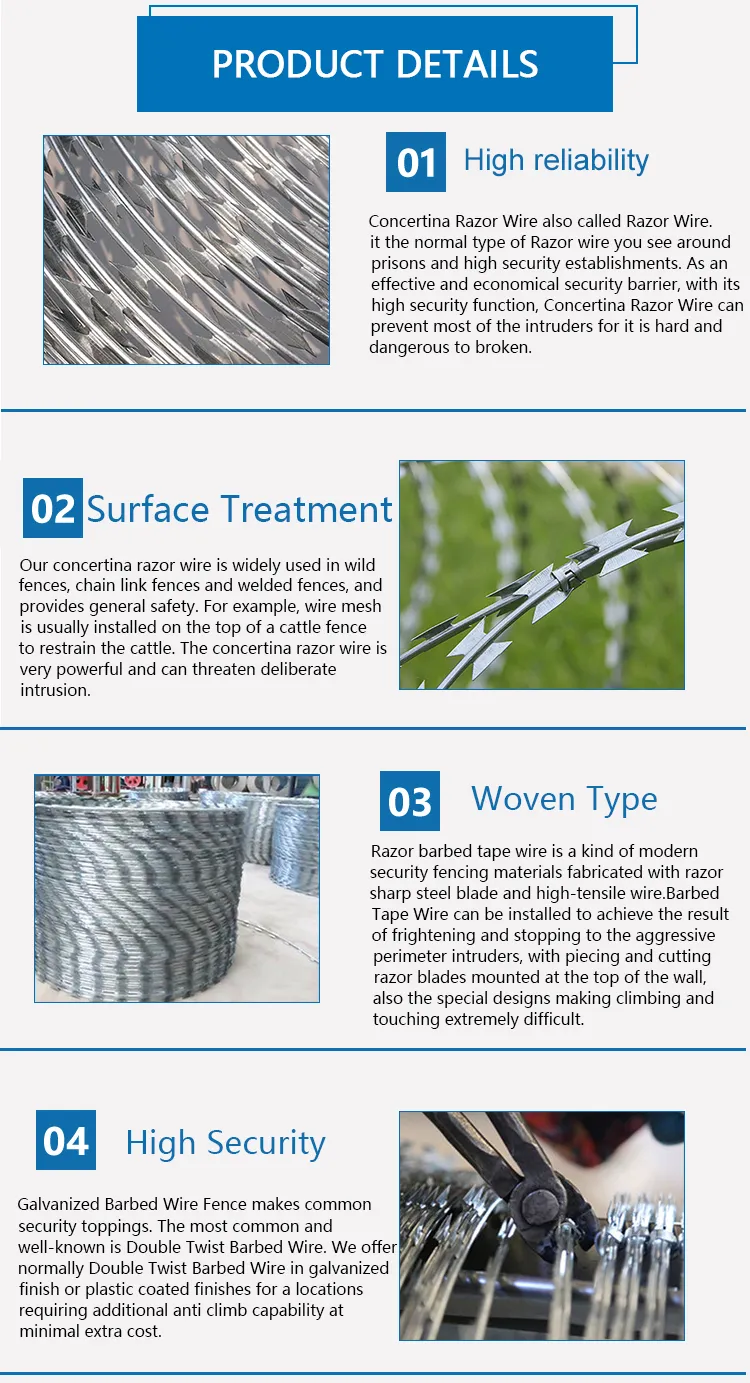
Stacheldraht wird häufig in Sicherheitseinrichtungen wie Gärten, Krankenhäusern, Industrie- und Bergbauunternehmen, Gefängnissen, Grenzposten, Haftanstalten, Regierungsgebäuden usw. verwendet.
Es wird auch zur Unterteilung von Eisenbahnstrecken, Autobahnen, landwirtschaftlichen Zäunen usw. verwendet.
Anwendungsszenario





















